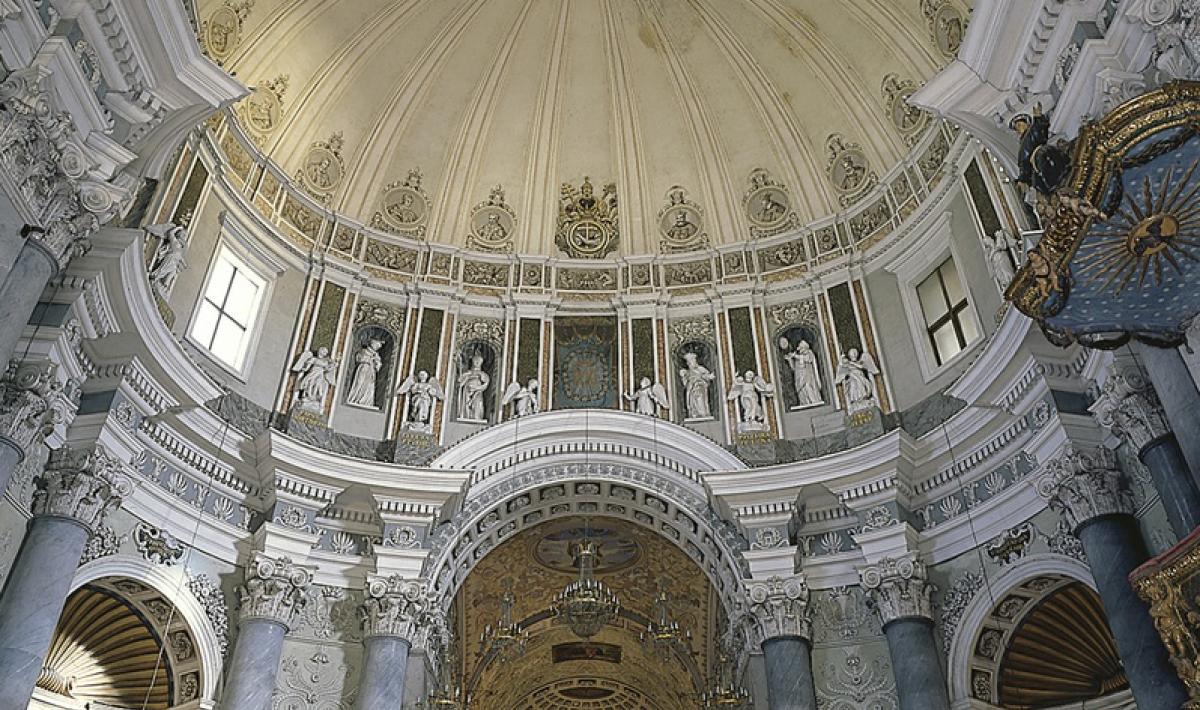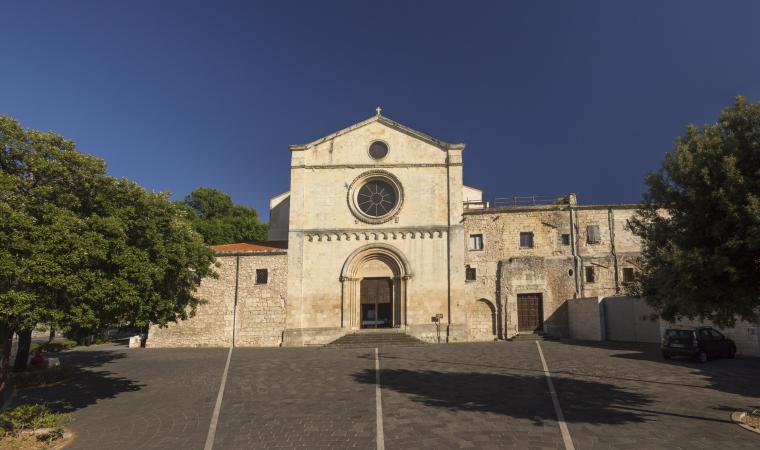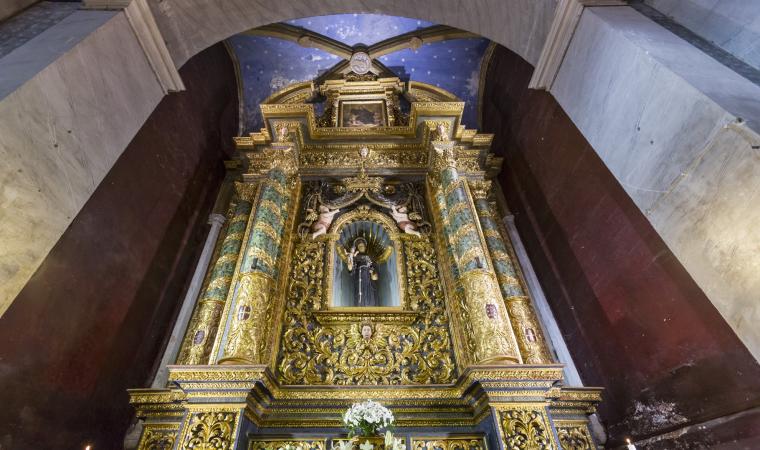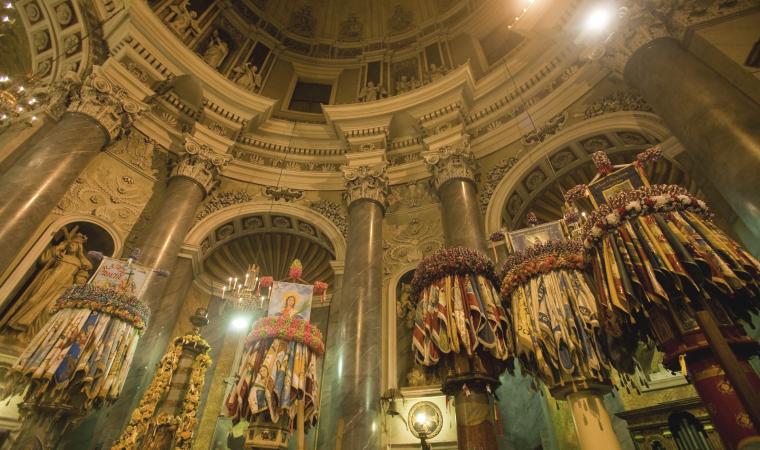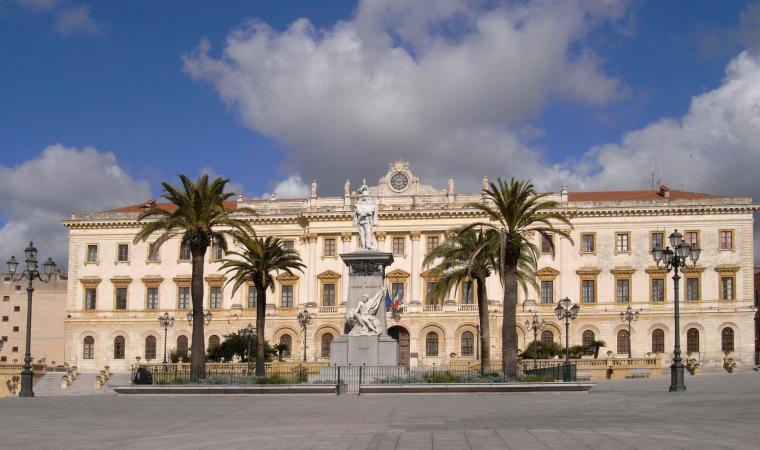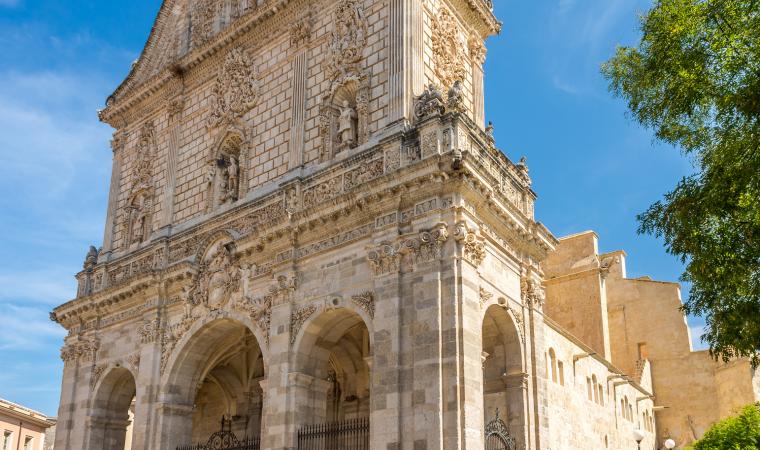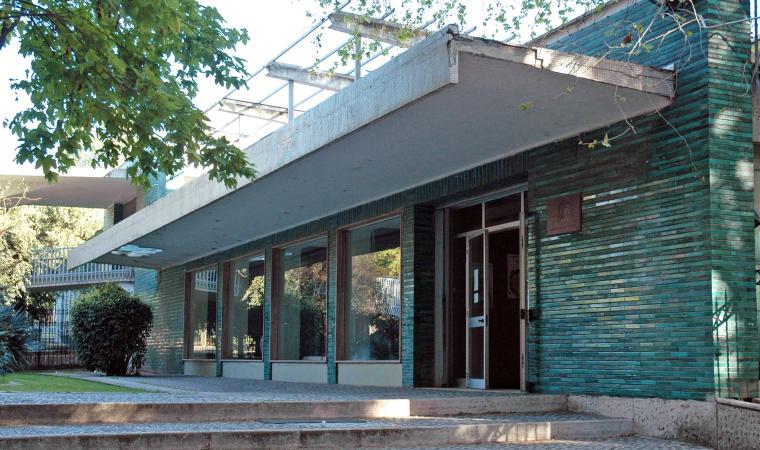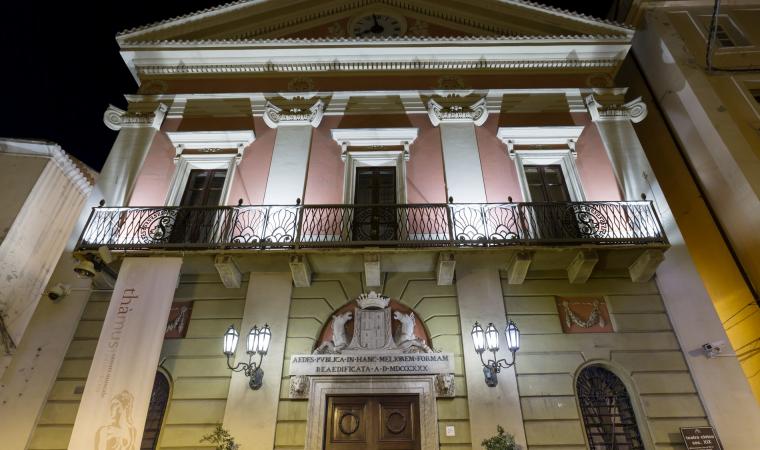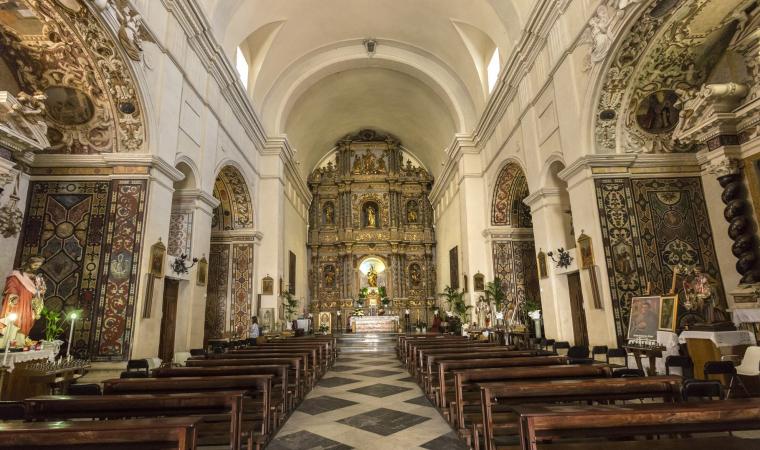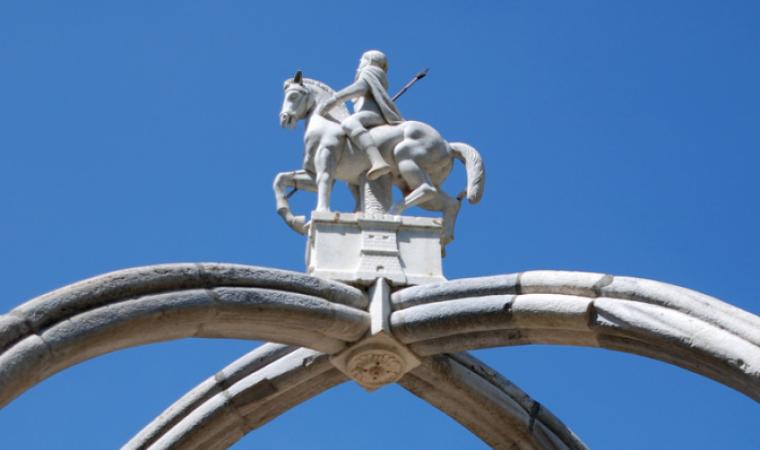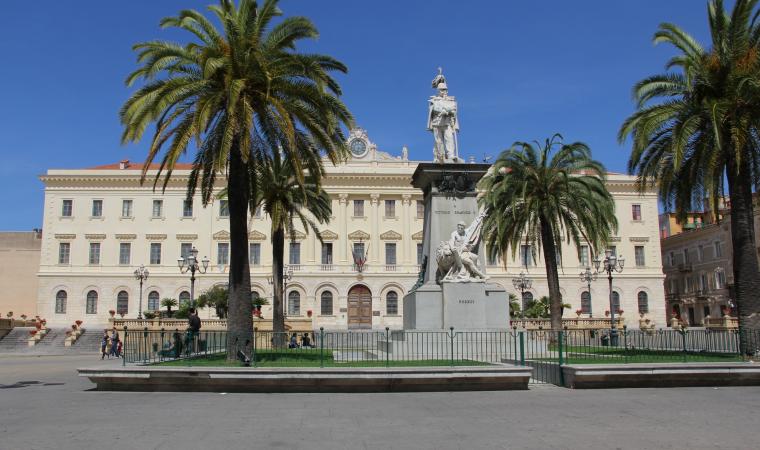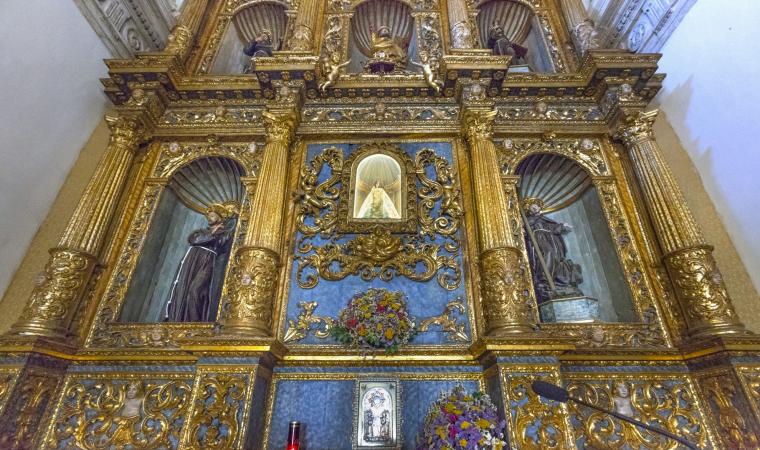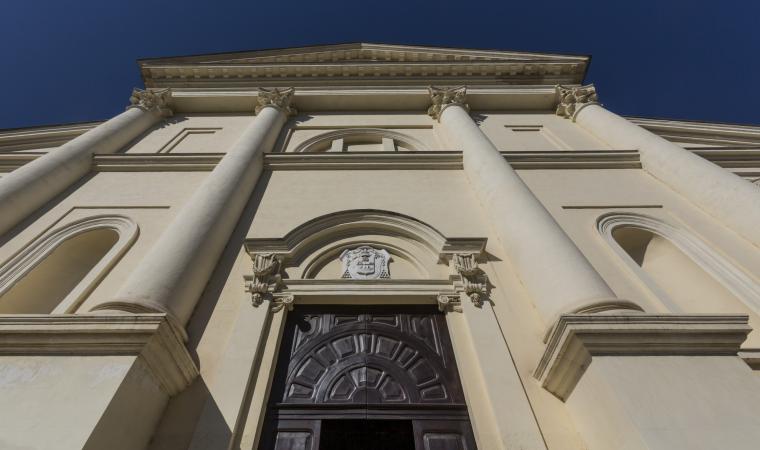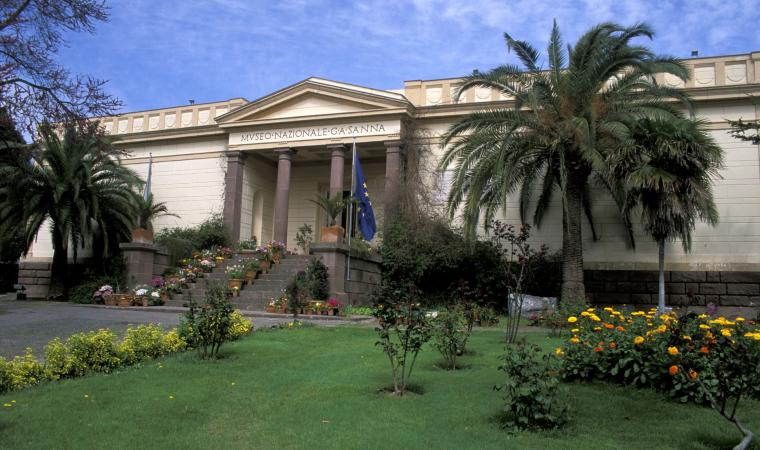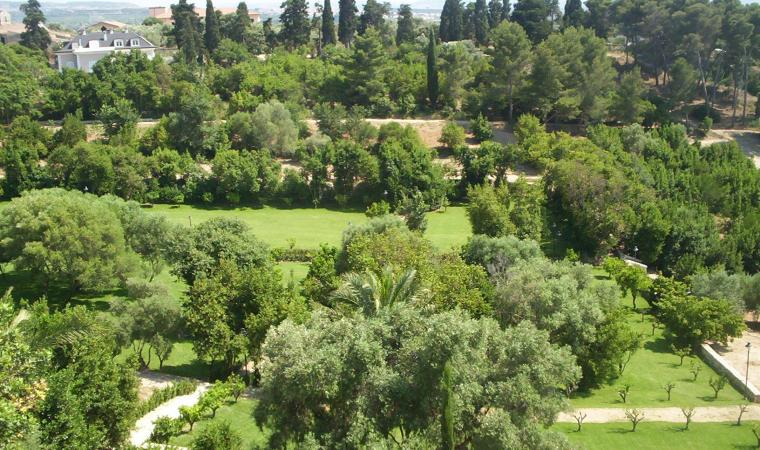It is part of the artistic landscape of Sassari with its rich architecture and variety of styles, embracing a very long period, from the 12th to the 14th century, and it harmoniously brings together Romanesque, Gothic, Baroque, Rococo and Neoclassical elements. With its large size, Santa Maria di Bétlem, dedicated to the Vergine Assunta (Blessed Virgin of the Assumption), dominates, the square of the same name and Largo Porta Uzeri, rising up before a paved cloister, where the sixteenth-century fountain of the ‘Brigliadore’ from brillador (spout) stands out. The Discesa dei Candelieri, (Descent of the Candlesticks) starts at the church and this event is the one that the inhabitants of Sassari love the most. Inside, the Candlesticks are wooden votive candles are kept and are carried during a procession on 14 August: it is the place in which seven gremi of the artisans and merchants are located: public transport workers, farm workers, carpenters, builders, greengrocers piccapietre (stonemasons) and tailors.
Built in the 12th century and rebuilt in Gothic style during the last quarter of the 13th century, it is the most ancient church in the town. Its reestablishment dates back to the arrival of the Franciscans (1274): the church and monastery (previously Benedictine) of Santa Maria di Campulongu were donated to them and, still today, the convent is that of the friars minor. The Gothic structure of the building was reworked several times, starting in the 14th century. A cross-vaulted chapel with pointed arches emerging from capitals with crochet-design leaves dates back to the earliest period. In the mid-15th century, it was re-established with the addition of Late Gothic style chapels and a cross vault in the presbytery. Two centuries later, the apse was added. The wooden roofing of the nave was replaced by cross vaults in the 18th century. Further intervention, between 1829 and 1834, was carried out by the architect monk Antonio Cano, who introduced architectural and decorative Rococo and Neoclassical elements. About twenty years earlier, Cano had also taken care of the renovation of the annexed convent.
Today you will see the original gabled façade, built in sandstone, in Romanesque style, but full of Gothic motifs, Arabian-style decorations and classical columns. In the lower part, the structure of the monastery, built in 1106 at the behest of the Giudice (judge) of Torres, has been maintained. The façade is tripartite: an architrave portal, intermediate level with a Gothic rose window (15th century) and third order with an eighteenth-century oculus. The exterior features a cylindrical bell tower, on top of which there is a little dome, the work of architect Antonio Cherosu (1846). Inside, there is a single nave, which is cross-vaulted and has parastades (added by Cano). To the sides, there are three chapels on the right and four on the left. In the domed transept, which is also the work of Cano, you will notice four Baroque and Gothic style chapels and niches with effigies of saints. Other beautiful works complete the Betlem treasure: the fifteenth-century statue of the Madonna della Rosa (Madonna of the Rose), paintings by Giacomo Cavedoni and the pulpit and retable by Giovanni Antonio Contena.

